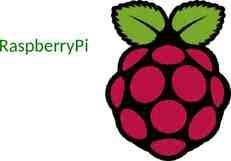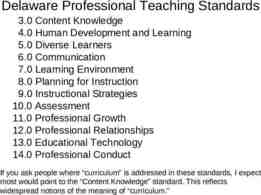Title VII Primary Care Training Grants for PA Programs: Tips for
48 Slides3.17 MB
Title VII Primary Care Training Grants for PA Programs: Tips for a Successful Application David Keahey, PA-C, MSPH Constance Goldgar, MS, PA-C University of Utah Physician Assistant Program PAEA Annual Education Forum November 7, 2009 Portland, Oregon
Tips for a Successful Title VII Application Goal: – Attendees will gain understanding of federal funding in support of physician assistant education and obtain knowledge that will help them write approved and funded Title VII grants.
Tips for a Successful Title VII Application Objectives: – Understand the evolution of federal support of physician assistant training over the past 40 years and the purpose of the Physician Assistant Training in Primary Care Program. – Develop the skills necessary to identify needs in their programs that would benefit from Title VII funding. – Acquire the knowledge of the application format, review criteria, budget justification, and funding priorities and preferences to permit the successful authorship of a Title VII grant.
Tips for a Successful Title VII Application Objectives: – Describe the organizational skills and administrative support necessary to develop, achieve, and measure objectives that will be made possible with grant funding. – Understand the reporting requirements for grantees.
HRSA Mission and Goals HRSA provides national leadership, program resources and services needed to improve access to culturally competent, quality health care. As the Nation's access agency, HRSA focuses on uninsured, underserved, and special needs populations in its goals and program activities: – – – – – – Improve Access to Health Care. Improve Health Outcomes. Improve the Quality of Health Care. Eliminate Health Disparities. Improve the Public Health and Health Care Systems. Enhance the Ability of the Health Care System to Respond to Public Health Emergencies. – Achieve Excellence in Management Practices
Title VII Training in Primary Care Medicine and Dentistry Grant Program Includes six program areas: – – – – – – Residency Training Predoctoral Training Faculty Development Training Academic Administrative Units Physician Assistant Training Residency Training in General and Pediatric Dentistry
Title VII Funding for Physician Assistants Purpose To meet the costs of projects to plan, develop, and operate or maintain programs for the training of physician assistants and for the training of individuals who will teach in programs to provide training of physician assistants. Eligibility Public or nonprofit private hospitals, accredited public or nonprofit private schools of allopathic or osteopathic medicine, or public or nonprofit private entities.
Current PA Funding1 http://www.acofp.org/./Fri%208am-12pm,%20Grant%20Writing,%20Williamson, %20Brenda.pdf 1
Title VII Section 747 History 200 million since 1972 has been invested in PA education2 FY 2008 18 PA programs funded – Range: 56,000- 232,500/year – Average: 140,398/year over 3 years 2 Cawley, JF. Physician Assistants and Title VII Support. Academic Medicine. 2008;83(11):1049-1056.
Step 1: Connected with a grants management division in your institution? Obtain an organizational Data Universal Number System (DUNS) number Register the organization with Central Contractor Registry (CCR) Identify the organization’s E-Business POC (Point of Contact) Confirm the organization’s CCR “Marketing Partner ID Number (M-PIN)” password Register an Authorized Organization Representative (AOR) Obtain a username and password from the Grants.gov Credential Provider
Step 2: Funding Factors and Funding Priorities A funding priority is defined as a numeric adjustment of an application’s review score when specific criteria are met. Each funding priority has a point value of five (5) points. Partial points will not be awarded Disadvantaged Priority
Race / Ethnicity Calculation Formula UNDERREPRESENTED DISADVANTAGED NON-DISADV. Subtotal of Underrepresented/Disadvantaged Program Completers 2006 plus 2007 Total 2006 plus 2007 Program Completers Total Percent Underrepresented/Disadvantage TOTALS Other White (not Hispanic) Asian (not Subpopulations) Underrepresented/Disadvantage Subtotal Other Disadvantaged White Disadvantaged (not Hispanic) Asian Disadvantaged (not Subpopulations) Asian Subpopulations American Indian or Alaska Native Native Hawaiian or Other Pacific Islander Hispanic or Latino Black or African-American Disadvantaged Priority Funding Factors Current Trainees (Academic Year 2007-2008) % Program Completers (2006) Program Completers (2007) % X 100
Disadvantaged Priority Funding Factors
Medically Underserved Community (MUC) Funding Preference Have a high rate for placing graduates/program completers in practice settings having the principal focus of serving residents of medically underserved communities; or During the 2-year period preceding the fiscal year for which an award is sought, have achieved a significant increase in the rate of placing graduates/program completers in such settings; or Meet the criteria for a new program.
2006 Program Completers as of July 2006 Residency Faculty Development PA Dental Residency FM GIM GP FM GIM GP Gen Peds 2003 Graduates as of July 2006 Predoc/AAU FM/GIM/GP TOTAL 2007 Program Completers as of July 2007 Residency Faculty Development PA Students Dental Residency FM GIM GP FM GIM GP Gen Peds 2004 Graduates as of July 2007 Predoc/AAU FM/GIM/GP TOTAL % Grads or Prog Comp in these settings Total # Grads or Prog Comp Total # of Grads or ProgComp in these settings Sites Designated by State Gov. Health Depts HPSAs, Dental HPSAs FQHCs IHS Sites NHSC Sites Rural Health Clinics Public Housing Primary Care Grantees Health Care for the Homeless MHC MUC Preference Request Table CHC MUC Table
Step 3: Special Considerations Special consideration shall be given to projects that prepare practitioners to care for: – underserved populations – other high risks groups e.g., elderly, individuals with HIV/AIDS, substance abusers, homeless, and victims of domestic violence Healthy People 2010 goals
Step 4: Writing the Grant Use the Program Guidance! Create the outline from the Program Guidance One person should coordinate the grant Assign action items and timelines for each objective Write the content to be consistent with the 7 Review Criteria
Program Guidance Outline--80 page limit not including tables Project Abstract--2 pages Progress Report--3 pages – Specific Objectives and Methodology – Outcomes and Evaluation Project Narrative – Introduction Organizational Information Needs Assessment (Rationale) Methodology Work Plan – Resolution of Challenges Outcome Measures and Dissemination Forms (multiple) Attachments – Organizational charts – Letters of agreement – Budget
Application Review Information 100 Points Total--7 Criteria Need (10 pts) – Narrative section: Needs Assessment Evaluative Measures (10 pts) – Narrative sections: Evaluation and Technical Support – Narrative sections: Organizational Information, Work Plan, and Progress Report Response (30 pts) – Narrative sections: Methodology, Work Plan, Resolution of Challenges Impact (10 pts) – Narrative sections: Outcome Measures and Dissemination Resources/Capabilities (15 pts) Support Requested (10 pts) – Budget Justification Specific Program Criteria (15 pts) – Special Considerations
Needs Assessment
Getting Started: Planning the Grant Writing Identify a leader and form a small team with diverse skills Develop timeline for grant prep/writing/submission Task responsible persons with internal deadlines (sections, full draft, budget) Assess impact of proposed project on program Negotiate needs of project (space, curriculum time, faculty resources) Identify partnerships/collaborators where applicable and think about potential letters of support Focus on access and improving healthcare outcomes
What Do You Want to Do? (Objectives) Can you state what you want to do in educational terms? How does it relate to the training of PA students? – Improvement in the didactic and/or clinical instruction (especially re primary care)? – Implementation of a new program/service to learners or community? – Addition of new skill sets to learners? – New curriculum or programs for learners? – Faculty development?3 Glicken, AD. Excellence in Physician Assistant Training Through Faculty Development. Academic Medicine. 2008;83(11): 1107-1110. 3
Rationale Can You Justify the Need for this Activity? Can you provide a rationale and assumptions upon which the project objectives will be based? Has a recent accreditation review created a need for change? Is there an emerging medical education topic that merits incorporation into the curriculum? Have you done a literature review? Did you perform a needs assessment?
Literature Review Have you researched the literature on the topic or proposed activities? – Is there any PA literature? If not, what exists for medical residencies, graduate medical education? – Does the literature support Your rationale? Your methodology?
Needs Assessment Don’t use old needs assessments Survey data from students, faculty, community-e.g., – Indicating that this competency or core clinical skill was weak once they were out in practice – Interest & eligibility of students and faculty (or community) – Demonstrated need in a specific area--e.g., cultural competence, health literacy Focus groups Baseline data - don't wait until you're writing a p roposal to collect It!
Needs Assessment Decide what information is most needed about targeted learners--e.g., – Students’ previous experiences or proficiencies – Different learning styles – Learning environment e.g., barriers, reinforcing factors – Resources available e.g., patients/clinical experiences, information sources, computers, mentors, etc.
Needs Assessment Use data to support that it is a compelling need – Census data – Historical data – Geographical data – State Statistical data – Pilot studies/research--yours and others
Alignment with Special Consideration Areas Special populations – Elderly, Homeless, Victims of Domestic Violence, Substance Abuse, Patients with HIV/AIDS Areas of innovation – Quality Improvement/Patient Safety, Health Literacy/Cultural Competency, PCMH Healthy People 2010 Overarching Goals – Increase quality and years of life, eliminate health disparities
Frame with SMART Objectives Specific Be specific about what you are going to achieve (i.e., use strong action verbs, be concrete). Measurable Quantify objectives (i.e., numeric, quantity, cost). How will you know you have reached your objective? Achievable Are your objectives achievable and attainable? Realistic Do you have the resources to achieve your objectives (i.e., personnel, facilities, equipment and in-kind contribution and requested in project)? Timely State when you will achieve the objectives (i.e., weekly, monthly, annually, by January ‘12).
Narrative Background – Description of Your current program, setting and resources Your program’s/institution’s strengths relevant to the project Need for the project (needs assessment) – National trends/drivers (e.g., service learning, learner-centered instruction, patientcentered care models, HP 2010) – Impact on learners, educational community, and patients – Relevance of your project to national priorities
Methodology Describe what is new or different Link activities to specific objectives Describe staffing/expertise you have in place to conduct the activities Timeline Think about how activities will be evaluated
Resolution of Challenges For each objective, or where pertinent, what are the specific barriers or perceived barriers to getting the activities accomplished, e.g., – – – – – Identifying key personnel Personnel training Establishing partnerships Insertion of curricular components Other
Evaluation Be specific in the evaluation – Have clear and measurable objectives – Allow for feedback into the process – Develop process and outcome measures Is the evaluation summative, formative, qualitative? Is it objective with realistic outcomes measures?
Other Points Make it easy for reviewers to find required elements Sustainability after the grant is key The proposed project should be doable by your group in your institution The proposed project should be relevant to the mission of HRSA
Budget Need rough idea of what it will cost to undertake each component of the study Need to account for time, equipment, office costs, etc. This could include: – – – – – – Consultant costs Travel Rental and leases Office supplies Equipment cost/maintenance Other
Budget Justification Justify all personnel – List all personnel involved even if no salary is requested: “in kind contributions” Identify unique roles each person will play Justify all costs/travel/expenses – Who will travel and why (purpose) – Estimate expenses for actual meetings
Performance Reviews and Progress Reports Set up monitoring system Involve key support personnel Continuously gather data PD (PI) should monitor due dates and assure that reports are submitted in a timely manner
Take Home Points Know the purpose of HRSA grant support Identify program needs within the HRSA framework Strongly consider investing faculty time as HRSA grant reviewers Register at Grants.gov or become familiar with grants management at your institution (DUNS, POC, M-PIN, AOR) Study the Program Guidance (don’t be intimidated) Use the Program Guidance as an outline Use the Review Criteria as a sub-outline Write the content in the comprehensive framework and to be consistent with the 7 Review Criteria
Take Home Points From the outset, use tables from the Program Guidance to track faculty and students (disadvantaged, gender, race, ethnicity, medically underserved training and employment) Continuously track data for future reporting on performance reviews and progress reports Contact successful Program Directors (PIs) to see if they will share copies of their grants
Your thoughts? Tips? Questions
References Catalog of Federal Domestic Assistance (CFDA) No. 93.884. Training in Primary Care Medicine and Dentistry. Authority: Title VII, Section 747, Public Health Service Act, as amended, (42 U.S.C-293k). Cawley, JF. Physician Assistants and Title VII Support. Academic Medicine. 2008;83(11):1049-1056. Glicken, AD. Excellence in Physician Assistant Training Through Faculty Development. Academic Medicine. 2008;83(11): 1107-1110.





















































